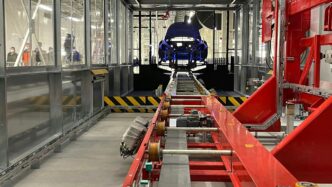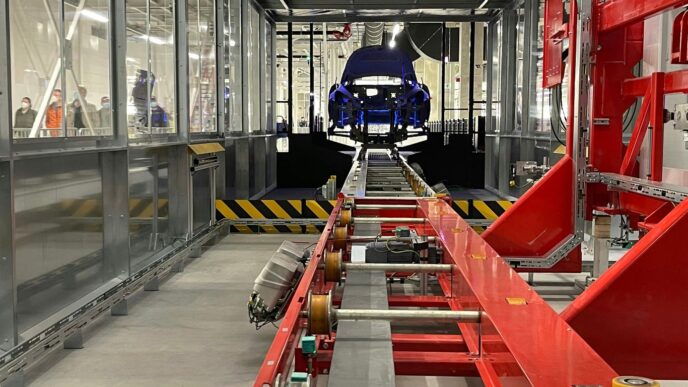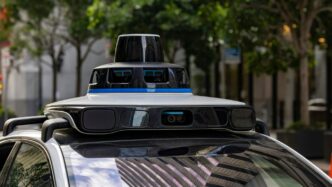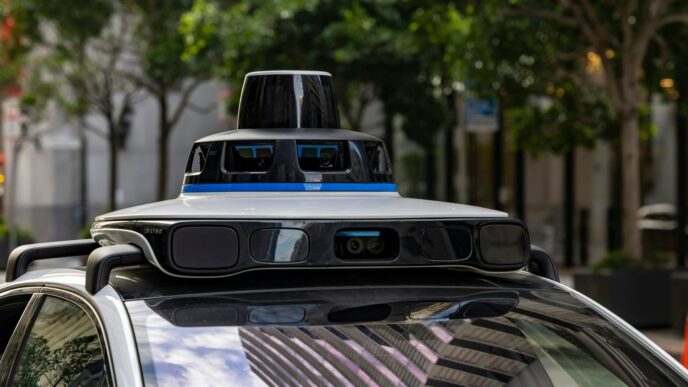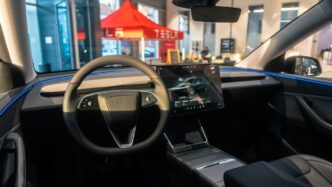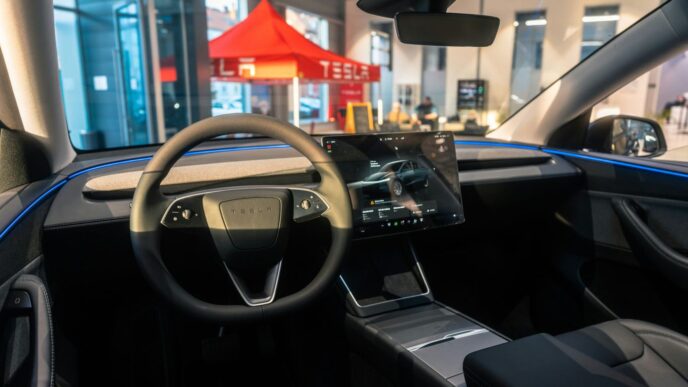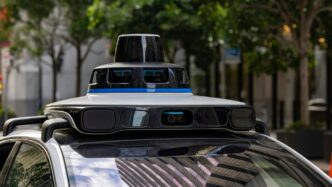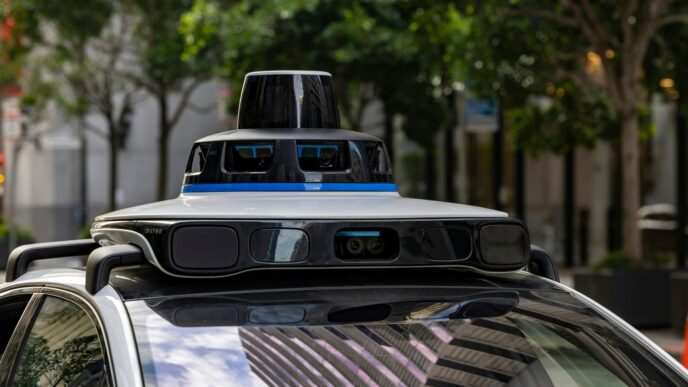Defining Autonomous Vehicle Level 3 and Its Legal Milestones

What Conditional Automation Means in Practice
Imagine you’re stuck in commuter traffic, tapping your fingers against the wheel. In a Level 3 autonomous vehicle, you could actually let go, look away, and maybe even finish that email. Level 3, often called "conditional automation," allows the car to manage most driving tasks in specific situations—like highway traffic jams—without your constant input. However, there’s a catch: you still need to be ready to take control when the car asks for it.
Here’s what “conditional” really means for drivers:
- The car takes over acceleration, braking, and steering in certain conditions (for example, low-speed traffic on a divided highway).
- You do not have to watch the road at all times, but you must be available to respond quickly if prompted.
- If the system encounters something tricky (like unusual roadwork), it will alert you to resume driving.
So, Level 3 isn’t hands-free-all-the-time—there’s still some responsibility on your shoulders.
Differences Between Level 2 and Level 3 Autonomous Capabilities
Let’s untangle the key differences between Level 2 and Level 3; a lot of folks get these mixed up.
| Level 2: Partial Automation | Level 3: Conditional Automation | |
|---|---|---|
| Who’s Responsible? | Driver at all times | Vehicle (in certain scenarios) |
| Eyes on the Road? | Required | Not required in certain conditions |
| Hands on Wheel? | Usually yes | Can be off in some cases |
| Control Transfer | Driver must always be ready | Car will request when needed |
- At Level 2, think more like a co-pilot—the car does stuff, but you have to pay attention every second.
- Level 3 lets you zone out for a while, but not nap. You’re still on standby, not off duty.
- Legal liability starts to shift at Level 3: when the system is running, it’s technically the car’s problem if something goes wrong.
The Role of Regulatory Agencies in Level 3 Adoption
Legal approval is a big deal—nobody wants untested tech making decisions at highway speed.
Regulators and agencies like transport ministries, the National Highway Traffic Safety Administration (NHTSA) in the US, and regional road safety boards have to:
- Define exactly what qualifies as "Level 3" under local law.
- Test the vehicles in real-world traffic before they get approval.
- Figure out who’s responsible if something happens: the driver, or the automaker?
With all eyes on safety and liability, countries have moved at different paces. For instance, Germany approved Mercedes-Benz’s Level 3 "Drive Pilot" for specific highways well before other places caught up. Meanwhile, some regions still haven’t set up legal paths for Level 3 at all. For drivers, this means that whether your car can legally run on autopilot depends not just on the tech, but on whether your local laws have stamped it OK.
Breaking Down the Technology: Sensors and AI Behind Level 3 Automation
When people hear "Level 3 automation," most think of cars doing all the work on the highway while drivers take a break. That’s not far off, but there’s a ton of clever tech working behind the scenes to make this possible. The secret? A mix of sensors and smart AI deciding what’s happening out there.
LiDAR, Radar, and Advanced Camera Systems
You can’t have Level 3 automation without serious hardware. Modern cars are decked out with:
- LiDAR units (Light Detection and Ranging): These act like the car’s eyes, creating a live 3D map of the area. They spot things like pedestrians, vehicles, or even a blown tire on the road.
- Radar sensors: These are better than cameras at picking up on speed and distance—super useful in bad weather or low light.
- High-resolution cameras: These catch everything LiDAR and radar might miss. They recognize lanes, traffic signs, and even hand signals from cyclists.
The real solution is not just using a single type of sensor, but all three together. That way, the car has backup if one system misses something.
| Sensor Type | Strengths | Weaknesses |
|---|---|---|
| LiDAR | 3D mapping, accurate object location | Can be pricey, struggles in fog |
| Radar | Sees through rain, measures speed | Not so great for fine details |
| Cameras | Reads signs, detects colors and shapes | Needs clear weather, sunlight |
Sensor Fusion: Integrating Data for Safer Decisions
Just having a ton of sensors isn’t enough. All their data has to be combined, usually in real-time. This is called "sensor fusion."
There are three key steps here:
- Collecting input from LiDAR, radar, and cameras at the same time.
- Comparing inputs to check for agreement (Did both LiDAR and radar see that truck?).
- Feeding the combined, cross-checked data to the car’s decision-making system.
This layered approach seriously cuts the odds of a false alarm or a missed hazard. In my opinion, it’s the most underrated tech leap in the move from Level 2 to Level 3 automation.
AI Decision-Making and Environmental Detection
Now all the information flows to the car’s AI—its “brain.” The AI’s main jobs are:
- Tracking everything: Cars, people, bikes, random debris, you name it.
- Predicting movement: Will that car merge? Is that person about to cross?
- Choosing what to do: Slow down? Change lanes? Hold position?
Here’s a quick look at how AI decision-making stacks up:
- Processes thousands of scenarios per minute.
- Evaluates different outcomes for each option.
- Adapts instantly to shifting road conditions (like sudden rain or heavy traffic).
One cool but sometimes overlooked fact: Today’s Level 3 AIs must account for local driving habits (like who yields at a stop sign), not just textbook rules. That’s where regional testing and constant updates come into play.
To sum up, Level 3 automation isn’t about one big invention—it’s the careful layering of trusted sensors and powerful AI. Cars can now handle the boring parts of highway driving and react to surprise obstacles, but only because these systems are talking (and learning) from each other, every second.
Safety Innovations Transforming Autonomous Vehicle Level 3
Built-In Redundancies and Fail-Safe Protocols
One of the big changes with Level 3 autonomous vehicles is the way car makers are baking in multiple layers of backups. Every critical system—like brakes, steering, and central processors—has at least one backup ready to kick in if something fails. For a quick rundown of what these systems support, check out this table:
| System | Main Technology | Redundancy |
|---|---|---|
| Braking System | Electronic Brakes | Dual Circuits |
| Steering System | Steer-by-wire | Hydraulic Fallback |
| Power Supply | Main Battery | Auxiliary Battery |
| Computing Unit | Central AI Processor | Backup Processor |
| Sensors | LiDAR/Camera/Radar | Sensor Overlap |
If, say, one sensor goes dead, another is always watching the same lane or object. This gives the vehicle time to either safely pull over or warn the driver. Fail-safe rules are now built right into the software: these cars have set procedures for nearly any kind of glitch—from losing GPS to a sudden hardware error.
Real-Time System Monitoring and Emergency Handling
Level 3 vehicles don’t just cruise along blindly—they’re constantly running checks on themselves. Here’s how they stay on top of system health:
- Run diagnostics every few seconds for sensors and processors.
- Alert the driver with loud warnings if anything seems off.
- Automatically move toward a safe stop if the problem is serious and the driver doesn’t respond.
Most cars keep a detailed log of every error, too, which can help with later repairs or figuring out what went wrong. And if you’re sitting in the driver’s seat, the car will give you simple, clear commands—like flashing lights or a buzzing seat—to get your attention fast.
Performance in Diverse Conditions: Weather and Traffic Complexity
The 2025 batch of Level 3 vehicles has to handle more than a sunny straight freeway. Makers are putting a huge focus on getting through tougher conditions. Some of the real tests include:
- Heavy rain: Advanced wipers and sensor cleaning systems keep cameras and LiDAR clear.
- Snow and ice: Extra algorithms double-check road markings and traction, switching to safer driving modes if it gets slippery.
- Dense, unpredictable traffic: The car can follow stop-and-go traffic, even if drivers around are making sudden moves or bikes appear out of nowhere.
Testing for bad weather isn’t just a checkbox. Regulations now demand proof that the car can cope with at least the most common scenarios, like night driving and low-visibility conditions. All told, Level 3 automation has to clear far more safety hurdles than any tech before it.
Certification, Liability, and Who’s Responsible for Level 3 Driving
Official Approvals and Legal Classifications
Getting a car classified as Level 3 autonomous isn’t as simple as loading it up with fancy tech and calling it a day. To legally claim Level 3 status, automakers have to go through a detailed certification process that’s set by different transport and safety authorities, and it gets even more complicated if you’re planning to sell globally. Government agencies want proof these cars can safely handle a bunch of very specific, sometimes strange, real-life scenarios—traffic jams, unpredictable weather, emergency stops, and system failures, just to name a few. Only then does the vehicle get the official Level 3 certification. That’s why you might see some brands using terms like “L2+” even if the technology might technically be capable of more—for now, it’s all about what’s certified and legal, not just what’s possible.
Current requirements for Level 3 certification often include:
- Demonstrated safe operation in a wide variety of driving scenarios
- Performance data from both simulated and real-world testing
- Built-in fallback safety measures (the car needs to be able to handle things if something goes wrong)
A quick look at how authorities compare levels:
| SAE Level | Certification Needed? | Driver Eyes On Road? |
|---|---|---|
| Level 2 | No | Yes |
| Level 3 | Yes | No (in some cases) |
OEM Responsibility and Insurance Implications
Here’s where things get sticky: once the Level 3 system is active, the automaker (OEM) is the one liable for what happens—not the human in the driver’s seat. That’s a big shift from Level 2, where the driver is always on the hook. If a Level 3 car crashes because its automated system couldn’t handle a situation it should have, that’s on the OEM from a legal standpoint.
This change is making insurance companies rethink the way they manage risk. Instead of targeting drivers, insurance policies now need to involve:
- Automakers covering incidents when the system is responsible
- Special policies for periods when human drivers are required to take control
- New products for personal injury, product defect, or even cybersecurity breaches
Most OEMs aren’t thrilled about accepting more liability, which is why some are a bit hesitant to release Level 3 cars until they’re sure the legal side is locked down. That’s part of the reason why Level 3 options are still rare, even if the hardware is out there.
Transition Protocols When Manual Takeover Is Required
Level 3 systems are conditional—they work until they hit a boundary (bad weather, construction zone, complex traffic). When that happens, the car hands back control to the human driver. But this switch isn’t always perfect.
Standard handover steps usually look like this:
- Car gives a clear visual and audio alert that manual takeover is needed
- Driver has a defined time window, often 10 seconds, to take back control
- If the driver doesn’t respond, the system activates safety protocols, like moving the car to a safe stop, activating hazard lights, or even unlocking doors for emergency responders
This handoff is a major focus of both regulation and engineering, because real life isn’t always neat. People might be distracted, drowsy, or confused. So, automakers are regularly stress-testing alerts, fallback maneuvers, and training drivers on what to expect. The goal is to prevent situations where the car can’t drive itself, but the human isn’t ready to step in—the one spot where things can go sideways fastest.
Bottom line: getting to Level 3 isn’t just about smarter cars—it’s about new rules, shifting responsibility, and designing for those messy human moments when people and computers have to swap places at exactly the right time.
How Level 3 Automation Is Redefining the Driving Experience
Level 3 automation is changing day-to-day driving in ways that weren’t possible a few years ago. For a lot of us, these new features are both exciting and a little strange. Here’s how this tech is shaking up the experience behind the wheel.
Hands-Off Policies: What Drivers Can (and Can’t) Do
With Level 3, drivers can finally take their hands off the wheel and eyes off the road—but only when the system says it’s okay. The car handles all the main driving tasks in certain traffic conditions, but you can’t take a nap or leave the seat. When alerted, you’re expected to take over quickly. Here’s what’s typically allowed and not allowed:
- You can read messages or even watch videos (if allowed by local law) while the car is in control.
- You cannot recline the seat all the way, climb into the back, or ignore requests to retake control.
- The driver still holds legal responsibility once the car signals it can no longer operate.
User Interfaces and Alerts for Control Transfers
Level 3 cars depend a lot on clear communication with the driver, especially when switching between automated and manual driving. Most have a special user interface that keeps you posted:
| Feature | Alert Method | Example Scenario |
|---|---|---|
| Visual alerts | Dashboard display | "Take control now" message |
| Audio signals | Chimes or spoken prompt | Sudden weather change |
| Haptic feedback | Vibrating steering wheel | Lane change ahead |
These systems combine different types of alerts to get the driver’s attention fast, just in case things turn tricky (say, heavy rain or weird lane markings).
Impacts on Driver Attention and Traffic Flow
Some folks worry Level 3 might make drivers spaced out, but early research points to a few big impacts:
- Drivers report more relaxed commutes in heavy traffic situations (especially stop-and-go).
- Sometimes, relying on alerts can mean slower reaction times if the car suddenly hands control back.
- There’s potential for smoother, more predictable traffic flow since cars keep safe gaps and steady speeds, even during rush hour.
In short, Level 3 is introducing a new partnership between humans and machines on the road—where trust, alerts, and clear rules matter more than ever before. Daily commutes in 2025 might not feel fully hands-free just yet, but they’re definitely less stressful than back in the days of total manual driving.
The Road Ahead: Market Trends and Consumer Adoption in 2025
Global Rollouts of Level 3 Autonomous Vehicles
In 2025, Level 3 vehicles are more common on city streets than ever before, but you still won’t see them parked on every driveway.
- Rollouts have mostly started in regions with clear legal guidelines—think Germany, Japan, and select states in the US like California and Nevada.
- Automakers are careful about launching in new markets and usually focus on urban and suburban zones before bringing the tech to rural roads.
- Most of these cars appear in luxury brands first before slowly reaching more affordable models.
Here’s how adoption looks in major regions after Q2 2025:
| Region | L3-Ready Models | Legal Approval | Share of New Car Sales |
|---|---|---|---|
| US (CA/NV/FL) | 7 | Partial | 4% |
| Germany | 12 | Yes | 7% |
| Japan | 9 | Yes | 5% |
| China | 8 | Pilot | 3% |
Major Automakers and the Competition for Leadership
Every big automaker seems to be fighting for the spotlight right now, but only a few are actually leading. Here’s what’s happening:
- Mercedes-Benz set the pace with early L3 certification in Germany and the US, specifically in Nevada and California.
- Honda keeps pushing boundaries in Japan, and their sales pitch often revolves around traffic jam features.
- BMW and Audi are racing all over Europe for wider acceptance, piling on new models by the month.
- US brands like GM and Ford are catching up, mostly testing in partnership with rideshare networks.
- Chinese brands (BYD, NIO) are rolling out pilot programs in mega-cities but still face scattered regulations.
Barriers to Widespread Implementation
Despite all the hype, mass adoption isn’t happening overnight. Some major obstacles are still slowing things down:
- Legal Frameworks: Regulations change from state to state, or even city to city. Some places don’t allow hands-off driving for private owners yet.
- Cost: Level 3 gear is expensive, so affordable trims are rare for now. Most folks aren’t ready to pay the extra for semi-autonomy.
- Trust and Public Perception: After a few headline-grabbing incidents and software glitches, lots of people are skeptical about letting the car do the work.
- Insurance: Policies and liability rules are still catching up, so some buyers are hesitant until they see clear coverage options.
- Tech Limitations: Bad weather, complex city intersections, and sudden construction zones still confuse even the best systems.
Nobody really knows when self-driving cars will become a total everyday normal, but 2025 feels like the year the conversation finally got serious. Major breakthroughs are here—just not everywhere, or for everyone, yet.
Protecting the Future: Cybersecurity and Data Privacy in Autonomous Vehicle Level 3
Risks of Connected Systems and Real-World Threats
Take it from the endless stream of headlines—each time a car gets more connected, the opportunities for bad actors multiply. With Level 3 automation, vehicles communicate constantly not just with drivers, but with road systems, service centers, even other cars. That means more doors for hackers to try and break through. Picture someone remotely disabling your brakes or stealing real-time location data—it’s more plausible than folks want to admit. Here are just a few attack types experts worry about:
- Remote access to steering, acceleration, or braking via vehicle networks
- Manipulation of over-the-air software updates
- Theft or misuse of personal driving and location data
Industry Standards for Digital Safety
You’ve probably seen car commercials boast about safety belts, airbags, or crash tests. These days, digital safety features should get just as much hype. There are real standards in play, and they aren’t optional for automakers in 2025. Some of the most important protective measures include:
| Security Practice | Description |
|---|---|
| Encryption protocols | Scrambles data sent between ECUs and the cloud |
| Intrusion detection systems | Monitors for weird, suspicious signals and behaviors |
| Secure booting and firmware checks | Proves every bit of software comes from a trusted source |
Regulators in the US and Europe now ask manufacturers to prove they’ve planned for cyberattacks with audits and stress tests. Sure, it sounds like IT stuff, but it’s literally what keeps folks safe on the road.
Building Consumer Trust in Autonomous Technologies
Getting drivers to trust that their information—and themselves—are secure is maybe the toughest challenge. It takes more than a company saying, "Trust us!" Here’s how the best automakers are tackling the problem:
- Be transparent about what data is collected and for what reason.
- Notify users by default if their vehicle’s systems are breached or show suspicious behavior.
- Offer settings that let owners manage data sharing—for example, disabling location sharing if they want.
Without clear, everyday explanations and actual control over privacy settings, people are going to keep side-eyeing autonomous vehicles. Frankly, that’s understandable! When cars get smarter, so do crooks, and the industry has to stay one step ahead to keep everyone safe—digitally, not just physically.
Conclusion
So, that’s where things stand with Level 3 autonomous vehicles in 2025. It’s a big step up from what we’ve seen before, but it’s not quite the sci-fi future some folks imagine. The car can handle a lot on its own, but you still need to be ready to jump in if it asks. Honestly, it feels a bit like having a really smart co-pilot who still wants you to keep your hands close to the wheel. The tech is impressive, and it’s already making roads safer and driving less stressful in certain situations. But there are still some bumps to smooth out—legal stuff, trust issues, and making sure the systems work everywhere, not just in perfect conditions. Still, seeing these cars out there, handling traffic jams and giving drivers a break, makes it clear that the way we drive is changing fast. Who knows? In a few years, we might look back and wonder how we ever managed without them.



